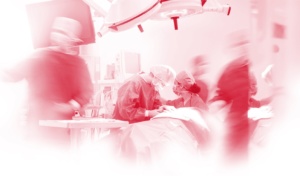
It’s Sunday and you meet up with friends to go jogging. After a split second of being distracted, you twist your ankle and you are in pain. You are fairly certain that you did not break any bone, but you would like to be sure and head to the next emergency room at the nearest hospital. After waiting for over an hour, your name still has not been called but people who came in after you have already been seen by a doctor.
Why is that the case?
What can patients expect at the emergency room?
Fortunately, most people will not need to visit an emergency room in their lifetime and can only assume what goes on there based on what they have seen on various television series. But does TV accurately reflect daily life in the emergency room?
After admission, which can be done by the patient himself or through an ambulance, physicians and other healthcare professionals evaluate how critical the state of the patient is. This procedure is also known as triage. Patients are put into the following categories during this initial evaluation:
- Acute emergency: Is the patient’s life at immediate risk? Do life-saving measures need to be taken?
- Urgent emergency: Does the patient have any severe injuries or illnesses, which need to be treated urgently?
- Non-urgent case: does the patient have minor injuries or illnesses that do not require the immediate attention of a physician?
- Non-emergencies: does the patient have symptoms or discomforts that can be treated with quick medical attention and be sent home or referred to a doctor outside the hospital?
Following this evaluation, a chain of action is put in motion, which puts the necessary therapy underway. As you can see, the common principle of ‘first come – first serve’ must not apply here.
When do AMOMED’s medical products come into play?
AMOMED’s products are used in acute or urgent cases, especially in intensive care and emergency medicine. For example, in tachycardic arrhythmias when the heart beats very fast and a rapid and efficient reduction of the heart rate is necessary. Or, for example, in septic shock when blood pressure is very low and can only be maintained through intravenous medicinal products.
For certain applications, especially in women and children, AMOMED also provides a highly effective analgesic.
If you want to learn more about our product portfolio, please contact us at office@amomed.com or +43 1 545 01 13 0.